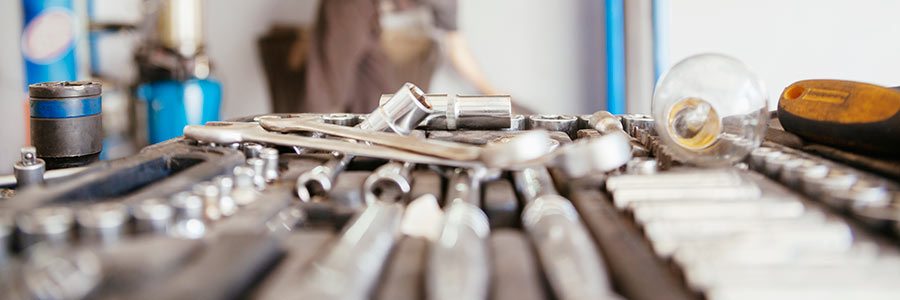
MAKING NEW EQUIPMENT PAY FOR ITSELF IN 90 DAYS
Purchasing shop equipment is no small decision. After all, new equipment carries a hefty price tag and no guarantee of a return on your investment.
In my shop, when the techs are begging for a new flush machine that will clean the transmission so clean and shiny that I’d want to hang it on my living room wall, and when I can’t think of anything more important than buying that new equipment RIGHT NOW, I force myself to answer the following question:
What is my plan for making this equipment pay for itself in 90 days?
This turns my internal debate into a pretty simple math problem.
If I buy a flush machine for $2,000, and I sell $2,000 worth of flushes, is it paid for? If you said ‘no,’ you’re correct! If your gross profit is 25%, and you sell $2,000 worth of flushes, you’ve only made enough to pay back $500 of your bill.
In other words, you’ve got to figure out your labor first. If your profit is 25%, your goal is to sell $8,000 in flushes in 90 days. If you charge $150 for each flush, that equates to selling 54 flushes in 90 days.
Is it even possible to sell 54 flushes in the first 90 days? If you buy an engine oil flush machine in February when everyone has already had a flush performed, it will be summer before you can even start selling the flushes you need to pay off your purchase!
If it is possible to sell 54 flushes in the first 90 days, do you have the right marketing in place to educate your customers? Do you have the right kind of customer base who understands the value of preventive maintenance?
Buying equipment the RIGHT way means patience and delayed gratification.
Forcing yourself to come up with a plan to make the equipment pay for itself in 90 days means you might end up saying, “This may not be the right time,” and waiting.
Being Successful vs. Appearing Successful
If you want to appear successful, then it doesn’t matter what I write here. Buy more house than you need, buy more car than you can afford, buy a new flush machine because you want to look good to your techs or the salesperson.
If you want to actually be successful, then you need to prepare for success.
In our shop, we go one step further. After we figure out how many services we’ll need to sell in 90 days, we decide that the time is right, and we get our marketing plan in place, then we get the team involved.
• We teach the team the features, benefits and value of the equipment and the service, and make sure our service writers are equipped with our Pocket Guide to Selling Preventive Maintenance.
• We quiz each other on those features, benefits and value until it becomes ingrained.
These are little things in the grand scope of running a shop. One contest to pre-sell preventive maintenance won’t make a flush machine pay for itself, but research, preparation, marketing, planning, training and a contest? The little things all add up to success.
 Are your techs doing thorough inspections? Are they identifying all of the needs on every vehicle, or are they pencil-whipping the inspection and doing the things they want to do? If your technicians are identifying every need, but your service advisors aren’t going over all of those needs at the front counter with the customer, they’re creating distrust between writers and technicians and tamping down sales. If your real labor gross profit is lower than the estimate you used in your plan to pay off that new equipment, you’re fooling yourself and putting your shop further in the hole. But, you’ll never know this if you aren’t tracking shop benchmarks like these on a daily basis.
Are your techs doing thorough inspections? Are they identifying all of the needs on every vehicle, or are they pencil-whipping the inspection and doing the things they want to do? If your technicians are identifying every need, but your service advisors aren’t going over all of those needs at the front counter with the customer, they’re creating distrust between writers and technicians and tamping down sales. If your real labor gross profit is lower than the estimate you used in your plan to pay off that new equipment, you’re fooling yourself and putting your shop further in the hole. But, you’ll never know this if you aren’t tracking shop benchmarks like these on a daily basis.
No ‘Easy Buttons’
If there’s a theme here, it’s that there aren’t shortcuts to running a repair shop. There are no “easy buttons.”
It means making a choice: I will do the hard things that will make my shop and I successful.
View “Making New Equipment Pay for Itself in 90 Days” by David Rogers
You can also download a PDf of this article here.

